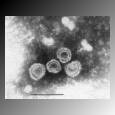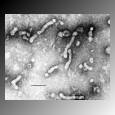 |
 |
Hepatitis A and E
![]()
|
Cause and Transmission (Epidemiology): Hepatitis A and E viruses cause a liver disease. The Hepatitis A, as well as the Hepatitis E virus (HAV or HEV), is usually spread from person to person by putting something in the mouth (even though it may look clean) that has been contaminated with the feces of an infected person. It is often contracted from eating contaminated raw shellfish or produce. How It Affects the Body (Pathogenesis): The virus infects intestinal cells and causes a symptomatic infection within about 30 days. Signs and symptoms may include jaundice, fatigue, abdominal pain, loss of appetite, nausea, diarrhea, and low-grade fever. It could lead to a chronic infection or liver damage (jaundice) if left untreated. Short-term protection against hepatitis A is available from immune globulin. It can be given before and within 2 weeks after coming in contact with HAV. There is also a vaccine for Hepatitis A. |